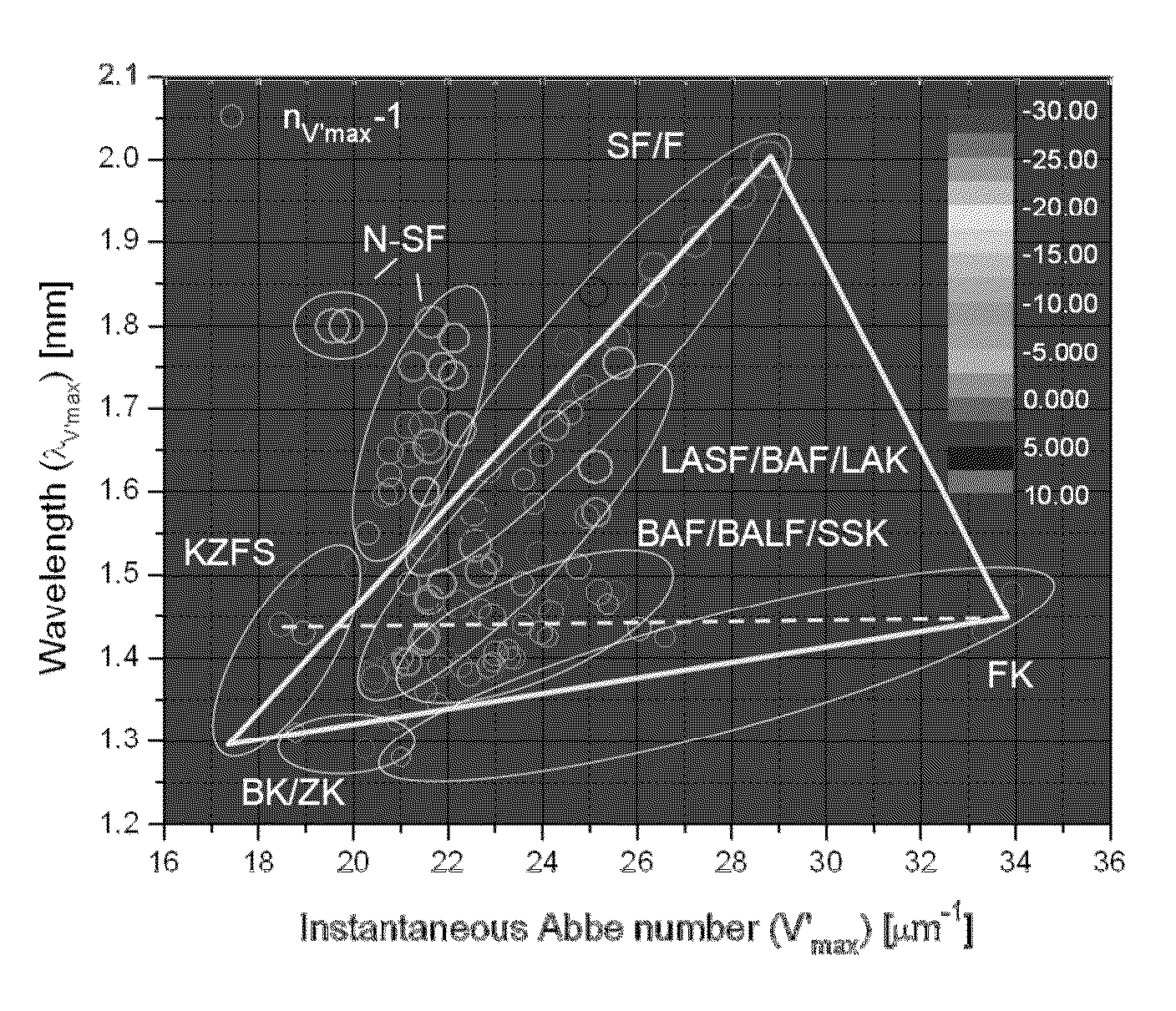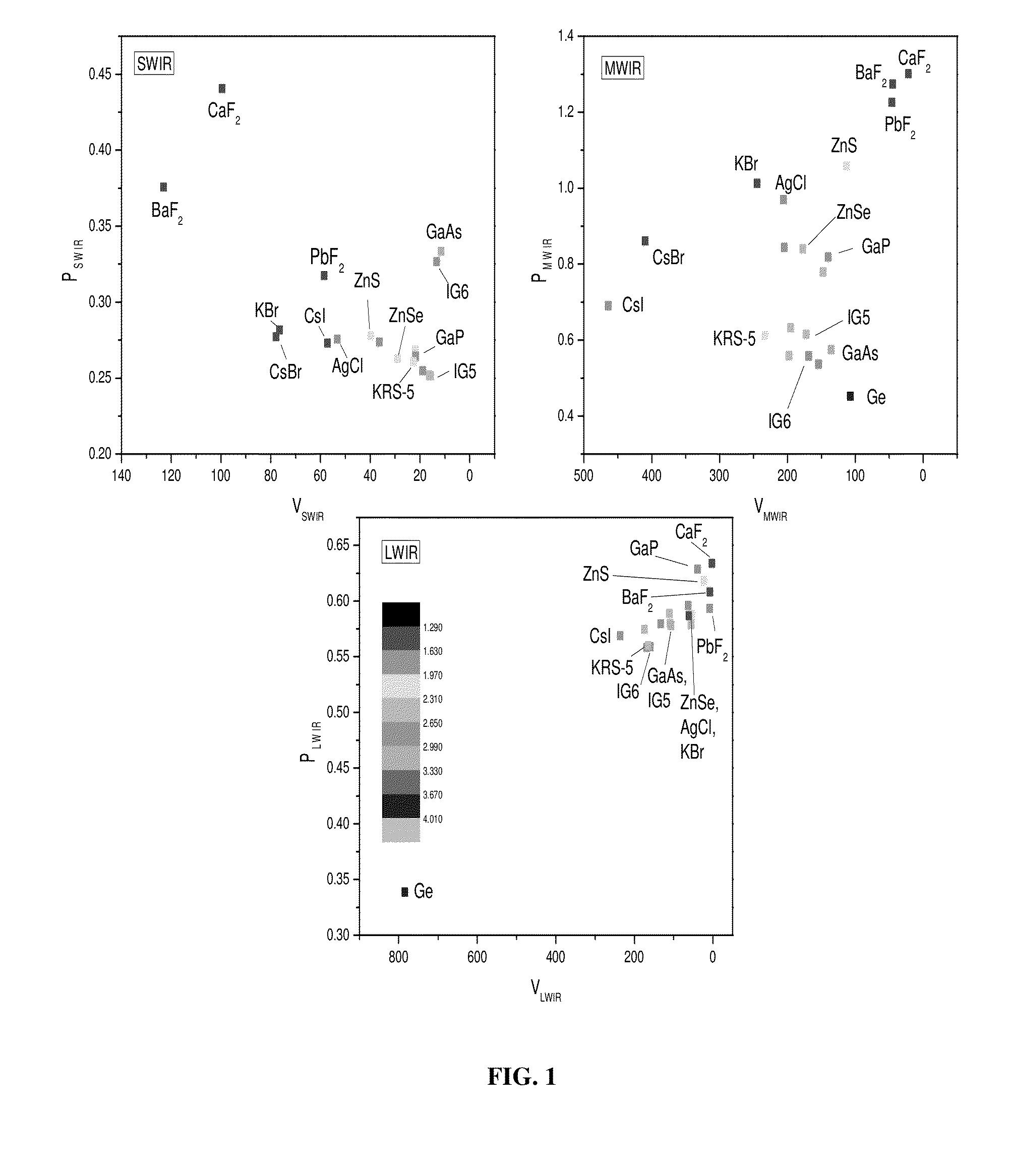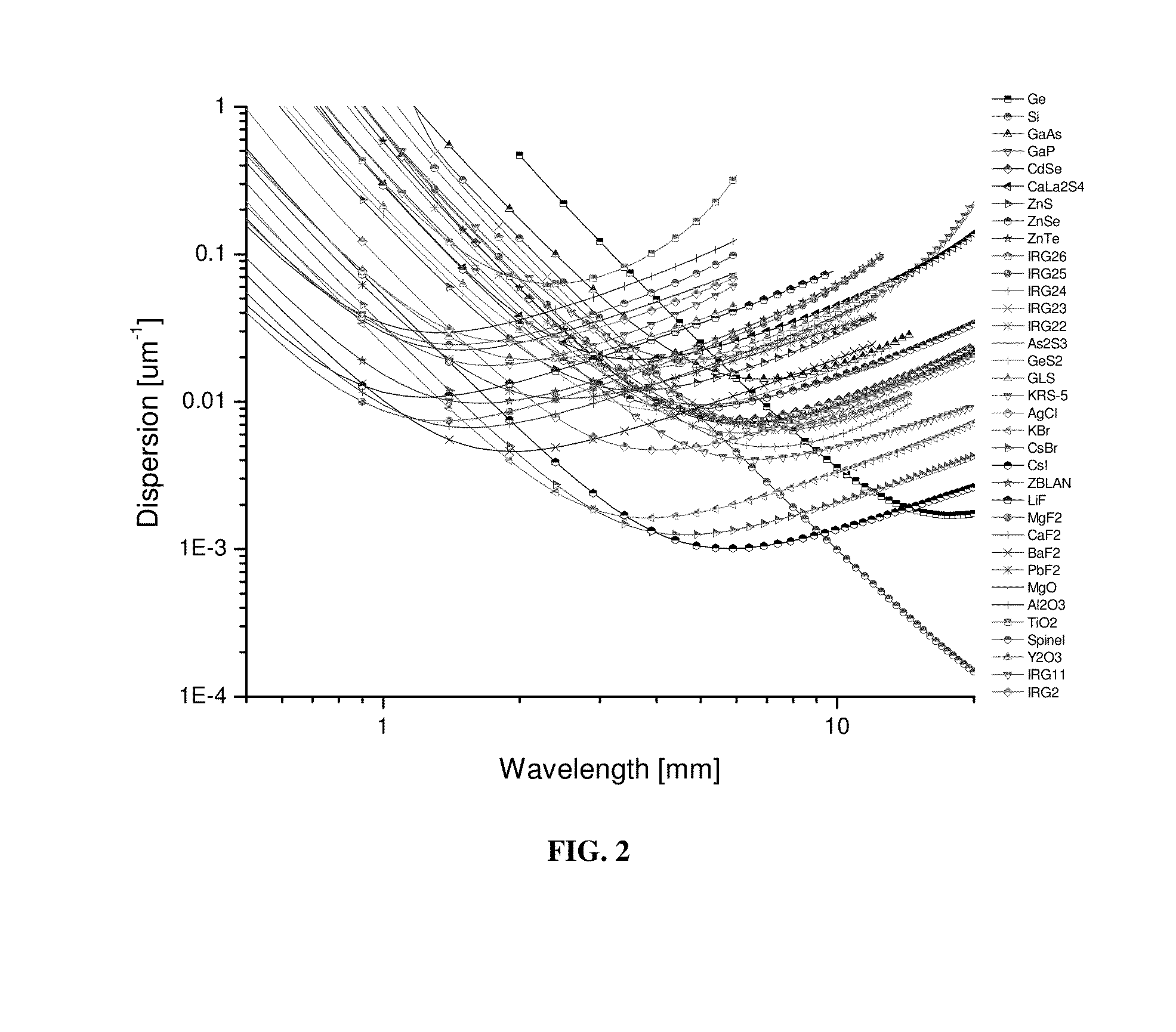Glass selection for infrared lens design
a technology of infrared lens and glass selection, which is applied in the direction of optics, optical elements, instruments, etc., can solve the problems of complex reasons, difficult, if not impossible, inability to design refractive optics capable of covering such a wide range of wavelengths, etc., to achieve balanced optical design, eliminate thermal and wavelength dependence of focal length, and simplify material selection
- Summary
- Abstract
- Description
- Claims
- Application Information
AI Technical Summary
Benefits of technology
Problems solved by technology
Method used
Image
Examples
example 1
[0059]An achromatic doublet is prepared from a first glass element made from the glass IGX-A (K=−0.923, made by Schott Glass) and a second glass element made from the glass IGX-C (K=+2.414, made by Schott Glass). The resultant optical lens is achromatic in the wavelength ranges of 0.7 μm 1.8 μm, and 8-12 μm, and is passively athermal when mounted in a housing of CTE=29 ppm / K This value is close enough to that of aluminum (23 ppm / K) as to allow good thermal performance near room temperature with an aluminum housing. A diffractive element is used to correct for LWIR dispersion, and the refractive powers are optimized for best shortwave performance.
example 2
[0060]An achromatic doublet is prepared from a first glass element made from the glass IGX-B (K=−1.130, made by Schott Glass) and a second glass element made from an AgCl crystal (+2.274)). The resultant optical lens is achromatic in the wavelength ranges of 0.7 μm 1.8 μm, and 8-12 μm, and is passively athermal when mounted in a housing of CTE=227 ppm / K. This value is large enough to require active re-focusing or heating of the lens assembly even over a very narrow range of ambient temperatures. A diffractive element is used to correct for LWIR dispersion, and the refractive powers are optimized for best shortwave performance.
example 3
[0061]An apochromatic triplet is prepared from a first glass element made from the glass IGX-A (K=−0.817, made by Schott Glass), a second glass element made from the glass IGX-B (K=+3.434, made by Schott Glass), and a third glass element made from the glass IGX-C (K=−0.920, made by Schott Glass). The resultant optical lens is apochromatic within the wavelength range of 0.7-12 μm and is passively athermal when mounted in a housing of CTE=66 ppm / K. No diffractive element is need, but one may be used to enhance thermal or chromatic correction.
PUM
 Login to View More
Login to View More Abstract
Description
Claims
Application Information
 Login to View More
Login to View More - R&D
- Intellectual Property
- Life Sciences
- Materials
- Tech Scout
- Unparalleled Data Quality
- Higher Quality Content
- 60% Fewer Hallucinations
Browse by: Latest US Patents, China's latest patents, Technical Efficacy Thesaurus, Application Domain, Technology Topic, Popular Technical Reports.
© 2025 PatSnap. All rights reserved.Legal|Privacy policy|Modern Slavery Act Transparency Statement|Sitemap|About US| Contact US: help@patsnap.com



